
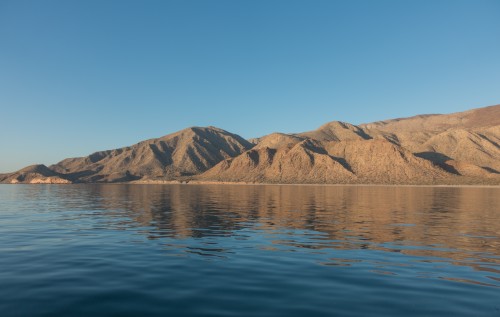
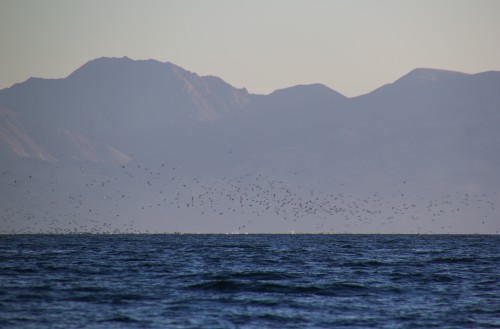

We woke up around six for the morning fishing excursion. Pretty much every day there was fishing in the morning and evening, to catch fresh fish to eat at Happy Hour and at meals. We had little interrest in fishing, however, we simply tagged along to sightsee. We headed north from the resort, along the west side of the sizeable island, Isla Angel de la Guarda. Gray told us the water between the island and the Baja peninsula was the deepest water in the Sea of Cortez, and because of that had some upwelling and currents that attracted the marine life, which in turn attracted all the seabirds.
 |
 |
 |
 |
We were not having much luck catching any of this sea life, however. Justin saw a swarm of something off in the distance, and pointed it out to Gray and Rafa. He said, only half-jokingly, “maybe all the fish are over there.” Gray agreed it was worth checking out, and as we got closer we could see a giant tornado of birds, numbering in the hundreds if not thousands, with dozens of dive bombs every second. Then, as we were approaching the mass of birds, Rafa said "Dolfinas" – Dolphins.
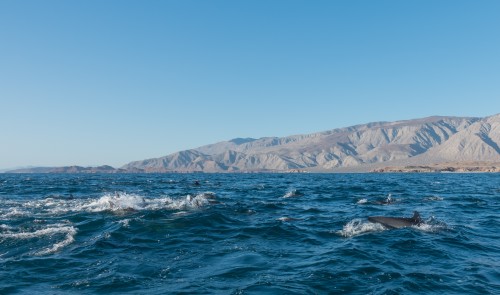 |
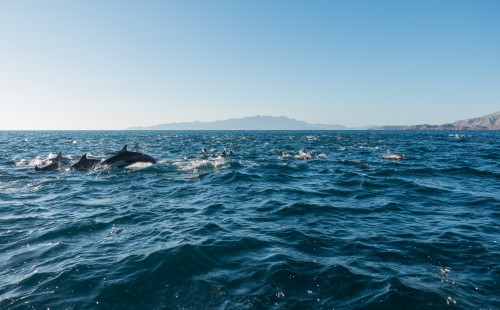 |
 |
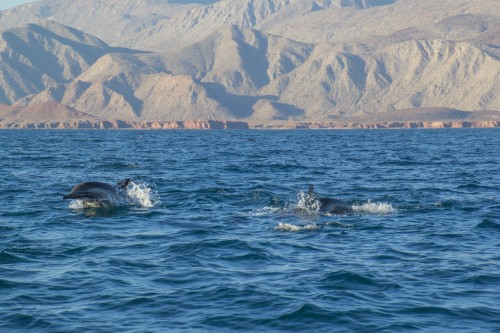 |
There were literally thousands of dolphins, an enormous superpod far larger than anything we’d ever seen before. We surmised that they had surrounded a big school of fish and everyone was chowing down in a feeding frenzy, including the birds. Gray described it as the "ocean is boiling." We just kept circling around and watching all the dolphins. They had whitish-gray stomachs and were fairly small; when we got back to the lodge we determined they were Pacific white dolphins. The whole event was really incredible, even moreso than what we had seen in the Galapagos in 2006. While the acrobatics were not as insane this time around, the numbers were far larger. Even Gray mentioned he’d never seen so many dolphins at one time.
 |
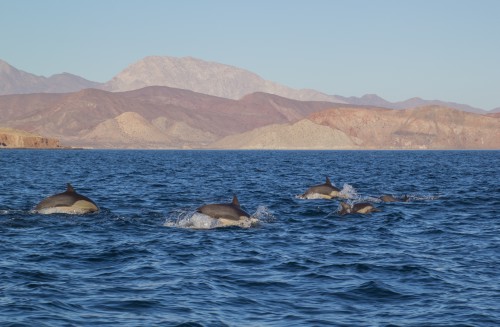 |
 |
 |
We could have stayed out all day with the pod, but we needed to be back for breakfast at 8. Gray had told us that while most of the other times in the day could slide, he tried to keep breakfast at 8 just to prevent propagation of tardiness throughout the day. Breakfast was eggs, beans, and chilequiles. This would become a theme – eggs, beans, and some sort of dish with tortillas.
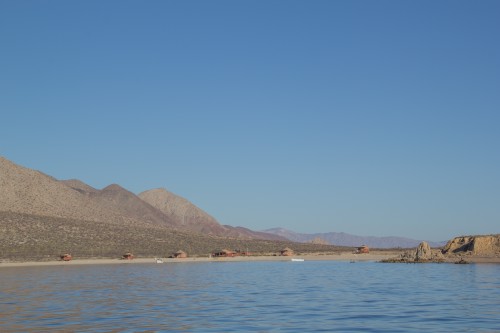 |
 |
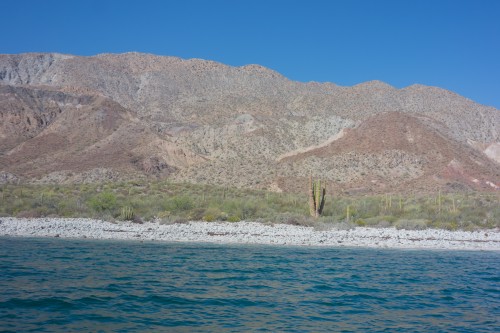 |
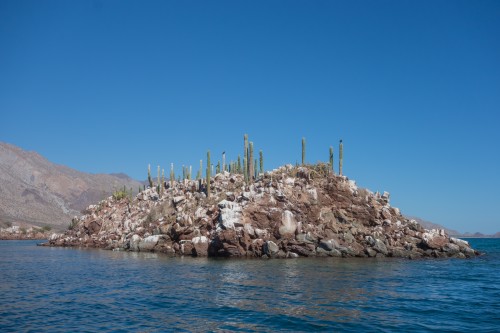 |
All of us headed out around 9 for whale sharks. We hugged the coastline as we headed east and south. There were lots of Cardon cacti, but not much else, in terms of plant life. Gray told us that the cardons are related to the Saguaro cacti, but are endemic to Baja. As we got to the south end of Las Animas Bay, we really slowed down as we headed east across the bay, looking for whale sharks. Unlike dolphins, whales, or any other mammals, whale sharks don’t have blowholes to give their positions away. So we had to really have our eyes peeled, only we weren’t exactly sure what to look for.
 |
 |
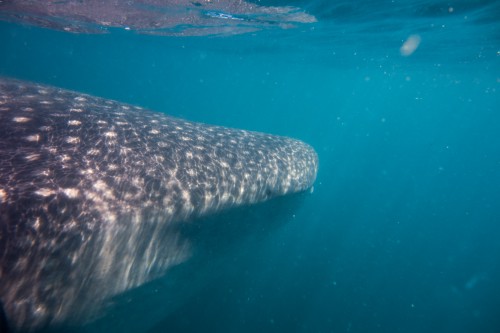 |
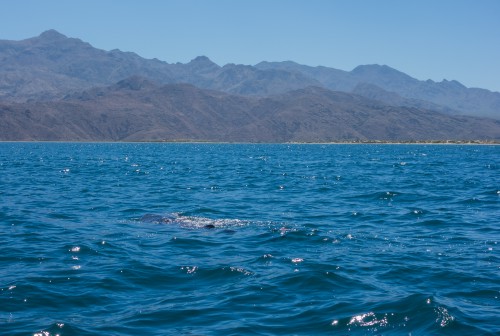 |
After we got all the way across the bay, we headed a bit north, then headed back west, like we were going to snake back and forth across the bay until we found something. Thankfully we didn’t need to keep snaking, as shortly after turning west, we spotted our first one. It was a big boy, probably 20 feet long, give or take. The boat was 28 feet long, so that made it a little easier to estimate sizes. As would become the custom, Rafa would get as close as possible, preferably just in front of the mouth, and people would hop in the water, with as little splashing as possible. Apparently the whale sharks don’t get spooked if there is minimal disturbance to the water and to them. So Gray told us not to splash too much with our kicking, not to freak out if we got really close to the sharks, and to just freeze in place if they went right underneath us.
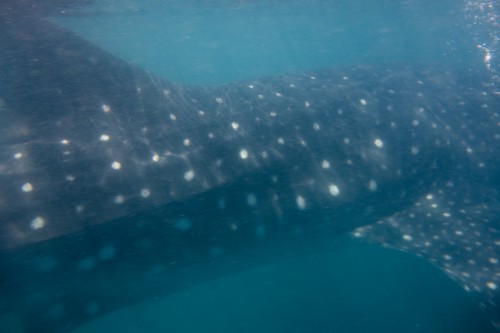 |
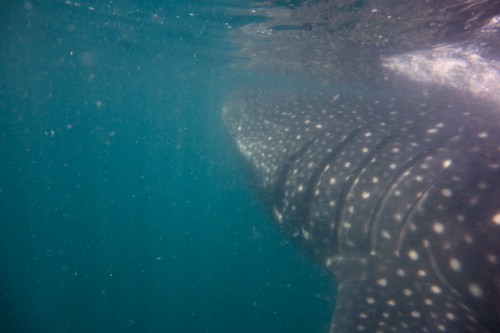 |
We got into the water, and immediately our bucket list item was checked off. They looked like submarines, with wide mouths, a tall dorsal fin, and a powerful tail that swished back and forth to propel them forward. When feeding, whale sharks come right near the surface, and their dorsal fin rises above the surface – this is how Gray and Rafa spotted the shark. After it swam away, we climbed back into the boat using stairs that Rafa held in place. It wasn’t too tough to get into the boat, but we could see that in choppier waters it might be much less fun.
After seeing the first whale shark, we started to see other ones with increasing frequency, and the usual process was that we’d come close to the shark, two people would hop in – preferably from the same side of the boat, while they were swimming we’d look to see if other sharks were nearby, and if so, two more people would hop in there, and when people got too tired and/or the whale shark swam off, the people would just float until the boat came to get them, at which point everyone would take off their gear and come up the stairs, only to possibly repeat the process a minute or two later. There were probably about 10 sharks over the course of a few hours. One of note was "Frank," who was notable because he was both enormous and because he had a notched tail either from a predator or from a boat engine. [He's the one in the video immediately below.] We snorkeled with him on multiple occasions.
It was easy to lose track of time when in the water. When we hopped in, we immediately would get a bit disoriented from the jump and the turbulent water. Then we’d quickly make sure our mask was on and that the snorkel had no water in it. Then we’d try to locate the whale shark, which wasn’t that easy, despite them being so big, because the visibility wasn’t great. All of the plankton that whale sharks eat makes the water very milky, so the visibility wasn’t much more than 20 feet. Indeed, it was hard for us to ever see the head and the tail of the whale sharks clearly at the same time, because if we could see one clearly, the other was fuzzy from being too far away. But once we found the shark and determined which direction it was headed, we would swim over and try to get alongside, preferably near the front where the whale shark could see us and realize we weren’t trying to attack them. Once we finally got alongside – which didn’t happen every time by a long shot – we would swim as long as we could, whether that was 10 seconds or 10 minutes.
 |
We were all very excited, and didn’t realize how late it was getting. Eventually we were all exhausted, but it hit us all at once, like a sugar crash or something. We got back around 1 or 2, dropped off our stuff at the room, then headed to lunch in the lounge area, which a nice view out over the small bay in front. About an hour later, we went to snorkel with the sea lions, which inhabited a small island just a few minutes from the resort. It was the two of us and Cynthia; Claudia’s leg was bothering her and Deanna was helping her out. We were a bit on edge, because in South Georgia all of the sea lions were unfriendly every time we were around them, particularly when we were near the shoreline.
 |
 |
 |
 |
The barking started as soon as the engine was turned off, as the sea lions had seen this enough to know it was playtime. It was really shallow around the island, so we could always stand up if need be. Underneath it was rocky, and Gray said we didn’t need to worry too much about stingrays, which apparently were voluminous on the sandy shores near the resort. It was kind of disorienting how big, and how fast, the sea lions were. We circumnavigated around the island, playing with sea lions, or more appropriately, them playing with us. There was one large bull that swam up to Justin and showed its teeth; presumably he had gotten too close to the shoreline.
After we finished our snorkel, we came back to the resort for happy hour. On the way back, to the northeast, was an amazing lightning storm from some clouds up around 30,000 feet if not higher. Lightning was going off constantly, every 10-15 seconds. It must have been pretty far away, as we never heard any thunder, but the light show in and of itself was really cool. Over our head it was just blue skies and sunshine. For happy hour it was margaritas, chips and guacamole, and music. After happy hour, as the sun was starting to set, we went fishing a second time, and actually fished this time. Gray and Rafa caught some stuff, but we can't remember what - we were just watching again. It was basically dark when we got back. We took a hand shower, which was a new experience. There was a big box full of water with a handle for carrying, about the shape of a giant picnic basket. Inside the box was a hose and a sprayhead with different settings. The hose had a dial for flow rate, and Gray told us to start with the flow as low as necessary, so as to not get through the water in short order. As the water pressure decreased, turning up the flow rate got back to the same type of flow. Each box held about 2 gallons of water, and miraculously, we managed to avoid running out of water.
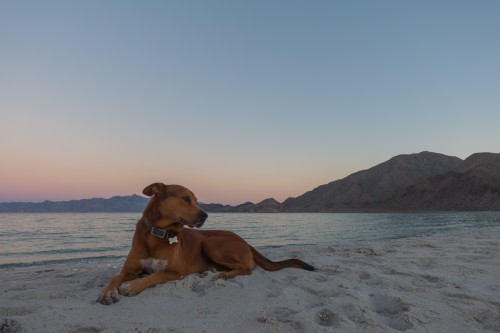 |
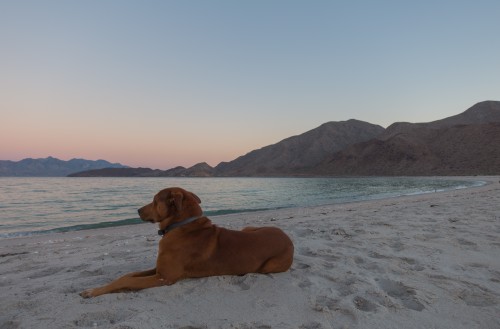 |
Dinner was around 8pm. We chatted about our backgrounds and interests at dinner. Claudia and Deanna used to be flight attendants at TWA, which is where they met. Deanna now works as a paralegal in the Bay Area, and Claudia does water and wastewater compliance stuff all over Riverside county. Cynthia works for the Peace Corps, most recently in Guinea (after Ebola was eradicated), soon to be in Zambia, and was taking a well-deserved break. We had a nice dinner, some more margaritas, and then went to sleep.
| Previous Day |